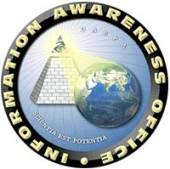The Information Exploitation Office, as it is now titled, has moved forward with plans to utilize incredibly advanced software and monitoring technology with the intent to provide to international and domestic security agencies the emerging capability to preemptively identify security risks. These new capabilities and their use make obsolete the previous boundary lines of privacy founded in our laws. In the near future, government computers will have access to all digital information, and will provide probable cause to suspect someone as a risk and the justification to investigate further. They will have all of your data stored, but will only look at it if the computer indicates suspicious behavior. What the software considers suspicious remains the highest secret. Are you suspicious? Will the computer think so?
“The DARPA Information Awareness Office (IAO) will imagine, develop, apply, integrate, demonstrate and transition information technologies, components and prototype, closed-loop, information systems that will counter asymmetric threats by achieving total information awareness useful for preemption; national security warning; and national security decision making.” 1
“This is an important research project to determine the feasibility of using certain transactions and events to discover and respond to terrorists before they act…The first part is technologies that would permit rapid language translation…The second part is discovery of connections between transactions — such as passports; visas; work permits; driver’s license; credit card; airline tickets; rental cars; gun purchases; chemical purchases — and events — such as arrest or suspicious activities…And the third part is a collaborative reasoning-and-decision-making tool to allow interagency communications and analysis.” 2
“Every purchase you make with a credit card, every magazine subscription you buy and medical prescription you fill, every Web site you visit and e-mail you send or receive, every academic grade you receive, every bank deposit you make, every trip you book and every event you attend — all these transactions and communications will go into what the Defense Department describes as “a virtual, centralized grand database.” 3
“In Germany they first came for the Communists, and I didn’t speak up because I wasn’t a Communist. Then they came for the Jews, and I didn’t speak up because I wasn’t a Jew. Then they came for the trade unionists, and I didn’t speak up because I wasn’t a trade unionist. Then they came for the Catholics, and I didn’t speak up because I was a Protestant. Then they came for me — and by that time no one was left to speak up.” – Martin Niemöller
